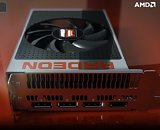Thursday, June 18th 2015

AMD "Fiji" Silicon Lacks HDMI 2.0 Support
It turns out that AMD's new "Fiji" silicon lacks HDMI 2.0 support, after all. Commenting on OCUK Forums, an AMD representative confirmed that the chip lacks support for the connector standard, implying that it's limited to HDMI 1.4a. HDMI 2.0 offers sufficient bandwidth for 4K Ultra HD resolution at 60 Hz. While the chip's other connectivity option, DisplayPort 1.2a supports 4K at 60 Hz - as do every 4K Ultra HD monitor ever launched - the lack of HDMI 2.0 support hurts the chip's living room ambitions, particularly with products such as the Radeon R9 Nano, which AMD CEO Lisa Su, stated that is being designed for the living room. You wouldn't need a GPU this powerful for 1080p TVs (a GTX 960 or R9 270X ITX card will do just fine), and if it's being designed for 4K UHD TVs, then its HDMI interface will cap visuals at a console-rivaling 30 Hz.
Source:
OCUK Forums

139 Comments on AMD "Fiji" Silicon Lacks HDMI 2.0 Support
:peace:lel that line :laugh:
Here take a cookie :D
From the second sentence of the article:If you click on the source hyperlink. you'll get it from the proverbial horses mouth.
So it is not real 4k gpu and with 4 gb vram HBM it could not be. Benchmarks is one story real games at 4k will eat that 4gb vram for breakfast, see GTA V , Shadow of Mordor and others .
Edit: source
Maximum Resolution: 4k @ 30 Hz (note: at time of writing no chipset supports 60Hz)
Meaning DisplayPort supports 60Hz anyway (I have it at 144Hz), output is HDMI 2.0 which means it should work at 60Hz on a LCD TV that has HDMI 2.0 input. Just at the time of writing no devices supported this. Question here is, when did they write the cable description...
non issue for almost anyone that will buy them.
But in the review section people are still complaining - is it related to driver ?
The HDMI (High Definition Multimedia Interface) specification was conceived more than ten years ago by six consumer electronics giants: Hitachi, Panasonic, Philips, Silicon Image, Sony, and Toshiba. Today, HDMI Licensing, LLC, a wholly owned subsidiary of Silicon Image, controls the spec. Manufacturers must pay a royalty for including HDMI into their products.
The DisplayPort specification was developed by, and remains under the control of, the Video Electronics Standards Association (VESA), a large consortium of manufacturers ranging from AMD to ZIPS Corporation. DisplayPort debuted in 2006 as part of an effort to supplant the much older VGA (Video Graphics Array, an analog interface first introduced in 1987) and DVI (Digital Video Interface, introduced in 1999) standards used primarily for computer displays. DisplayPort is a royalty-free product.
Fun fact: Of the six companies responsible for the creation of HDMI, only Hitachi and Philips are not also member companies of VESA.
www.pcworld.com/article/2030669/hdmi-vs-displayport-which-display-interface-reigns-supreme.html
When comparing DisplayPort 1.3 with HDMI 2.0, DisplayPort 1.3 has several key advantages. First, the video bandwidth of DisplayPort 1.3 is much higher than HDMI 2.0. This means that DisplayPort 1.3 can support higher resolution timing such as 8K at 60Hz, where as HDMI 2.0 can support 4K at 60Hz max. Second, DisplayPort 1.3 has the ability to transmit multiple video streams on one cable through the MST feature allowing multiple monitors to be daisy-chained together (although there are limitations as to the number of displays and resolution supported, which makes it more appropriate for desktop uses than video walls). Finally DisplayPort includes installer-friendly locking connectors. HDMI doesn’t natively support locking connectors though many Planar products do provide support for threaded hex nuts for special-locking HDMI connector - See more at: www.planar.com/blog/2014/12/15/displayport-13-vs-hdmi-20/#sthash.jrl6QSDr.dpuf
I can now understand why AMD is pushing Display Port over HDMI 2.0
Amazon.com: Belkin Displayport to HDMI Adapter (Supports HDMI 2.0): Electronics
- Supports HDMI 2.0 Technology, which increases bandwidth from 10.2 Gbps to 18 Gbps and is 4k and Ultra HD compatible. Increases from 8 Audio Channels to 32 Audio Channels for expanded audio. 60 fps video playback at 4k resolution. Dynamic synchronization of video and audio streams.
$11.56